These have been sitting on my desk at work for a while, waiting for me to digitise them. I bought them last second on Feepay and hadn’t really looked at them, avtually I have a batch of other stuff that needs looking at that still sitting in a box.
These are ten whole plate wet plate negatives of mixed subject matter, one of which dates to 1868/9 and Coventry, maybe someone might recognise the housing/streets in the images. Please let me know if you do!
A quick search on Google turned up some surprising results.
The Lamb and Flag on Spon Street, Coventry… a great plate.
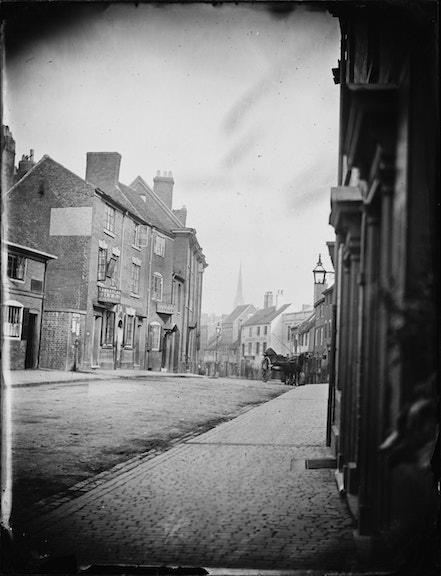
The Licensee can be seen to be C. Francis in this crop, and from online sources I found that he was only there from 1868 – 1869. So dating the plate exactly.
http://realalerambles.co.uk/history/L/lamb_and_flag.html#show1
And just down from there The Woolpack run by R Parker. 1861 – 1874!
http://realalerambles.co.uk/history/W/woolpack_149_spon.html
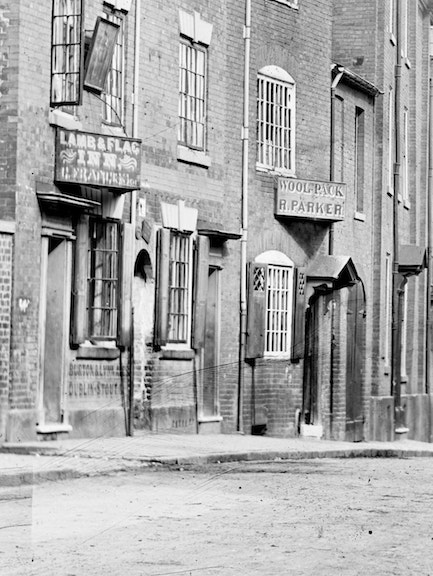
Edit: A water Conduit, an early water source. Crop below. Thanks Helen.

Further down the street is JM Stevens late Jordan? And the horse and cart is owned by W White, Market Gardener of Coventry.
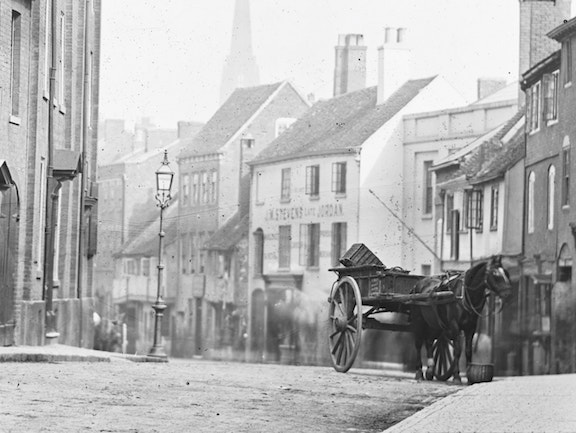
And how it looks now in Google Maps….
Doesn’t quite look the same nowadays but remember Coventry was very heavily bombed during WWII, so hardly surprising.
A new street, I haven’t been able to find this one…. Edit: Thanks to Anne for identifying this as Stoneleigh Terrace on Greyfriars Green, unfortunately now a Bypass.
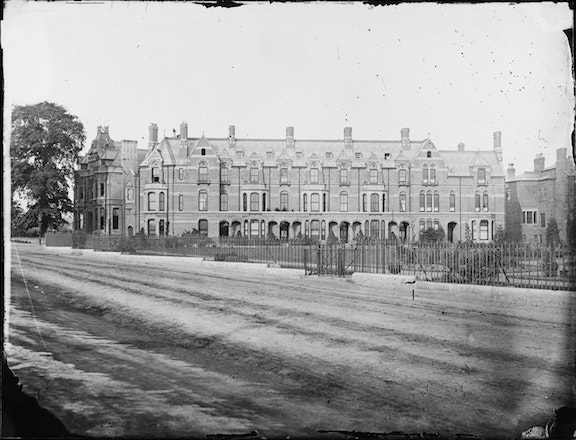
But some of the negatives have this masking to the glass side. Looks like its been etched into!


They best get that pavement sorted…
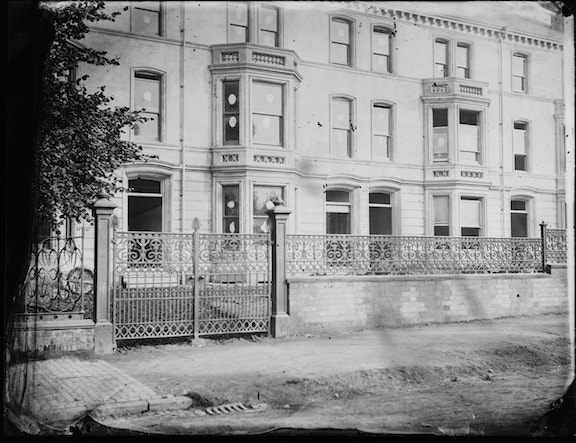
A fine country house.

Thanks to Helen and Anne for their messages.
This is Stone House in Allesley Village. There is an Estate Agent advert online at the moment and you can buy it for £800K… https://goo.gl/maps/14xHyA68Ssv
“The stone house is a grade 2 star listed property that dates back to 1557 when it was mentioned in the will of John Milward, the freehold was bought by William Clarke in 1608, making it an original sandstone built Tudor house. It is thought to have been built on the site of the pack horse gatehouse of the legendary Allesley Castle.
Boasting of eight/nine bedrooms, six reception rooms, cellar, two red brick outhouses and walled rear garden.”
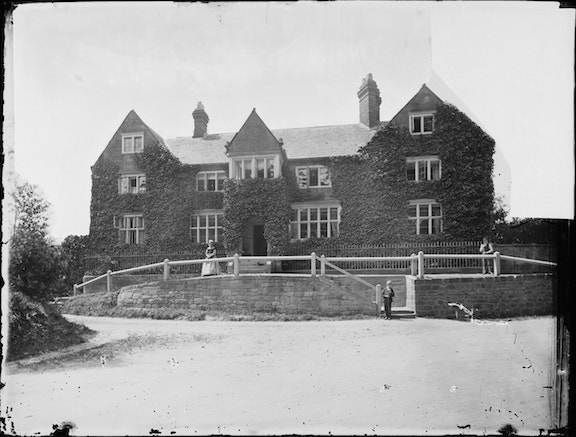
This one has a paper mask for the sky.
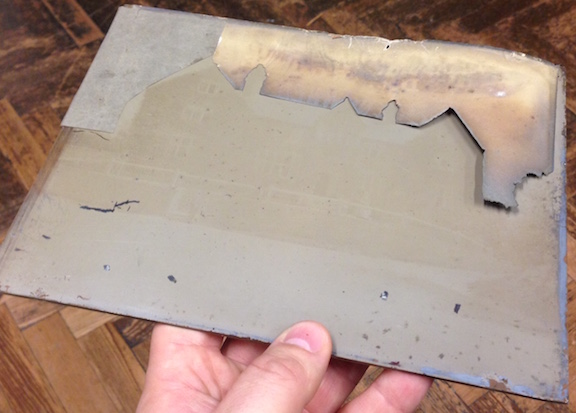
And a lovely country cottage…
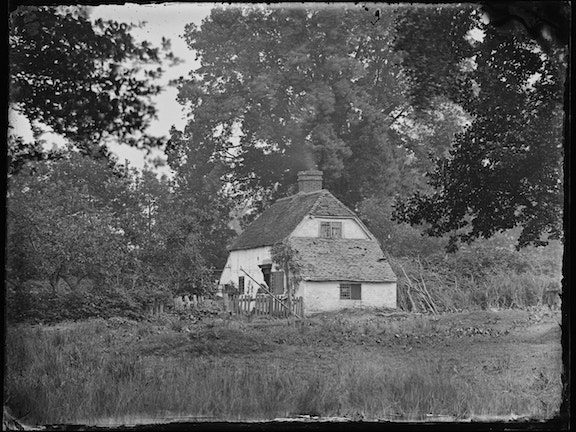
You can just make out the mother and child.
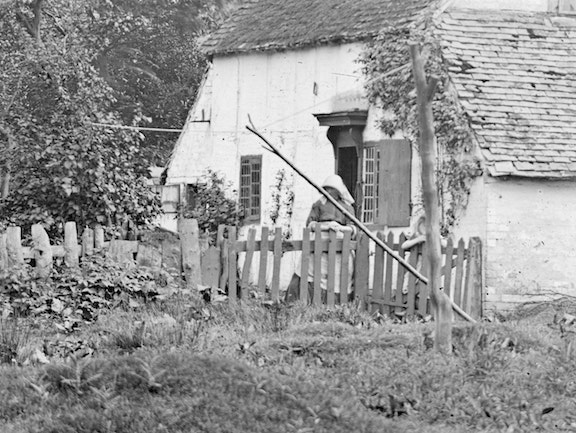
EDIT: Thank you to Mr Mark Singlehurst for the suggestion that the cottage above is the Coat of Arms Cottage at Stivichall Hamlet, near the Coat of Arms Bridge – now a grade II listed building. Google Streetview.
Looking a the old bricked up window areas and lower roof line it may well be.
EDIT II: And thank you to Cliff Berwick who sent me these images of what he believes to be Pound Cottage, again at Coat of Arms Road. They are indeed very similar.
Any thoughts? Priest to the left?
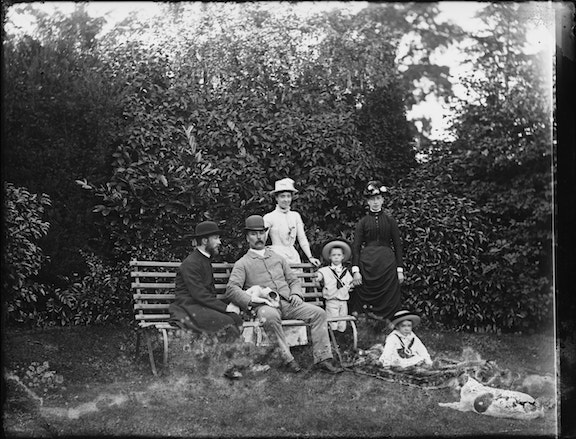
And this unusual group of soldiers?
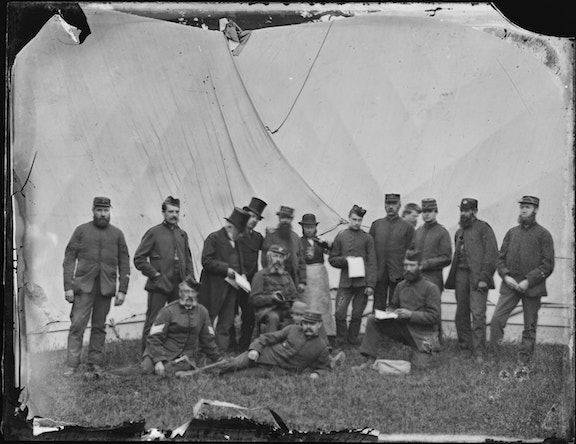
Again this one has been masked/etched but making the image much much worse, the actual plate has much more detail but is worsened by this masking?
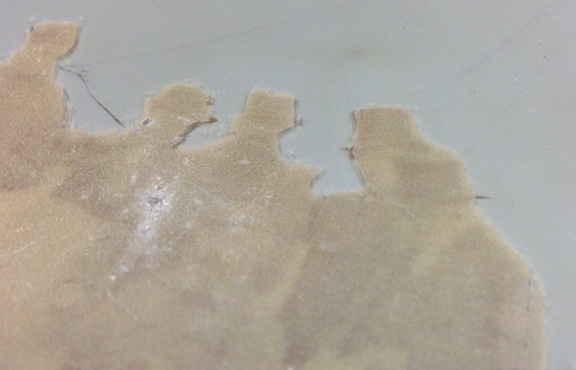
EDIT/UPDATE
After a visit to the Conservation Care Dept where I work, I found the masking is actually on the plate as a varnish of some sort and not etched into the glass as I first thought. This would have been done to balance out the exposure for printing between the tent and the subjects.
Now they wouldn’t condone what I did next… I removed it with an nail polish remover. So I digitised it again and now you can see far much more detail even if the photographer managed to focus on the tent rather than the subjects!
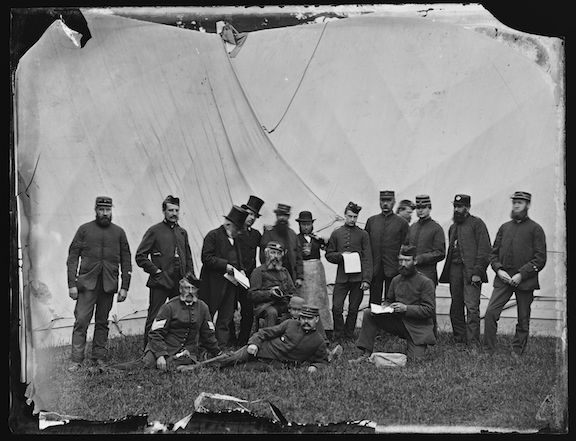
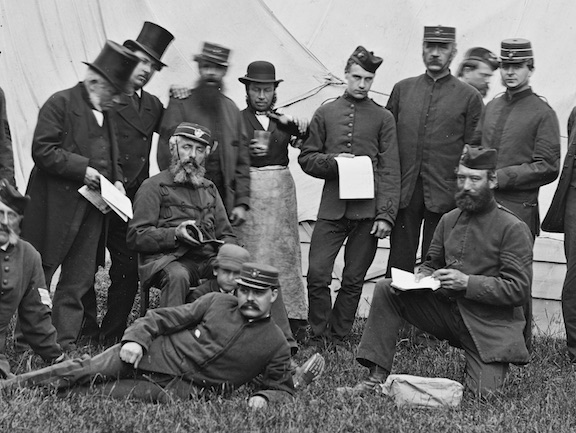
Beer anyone?
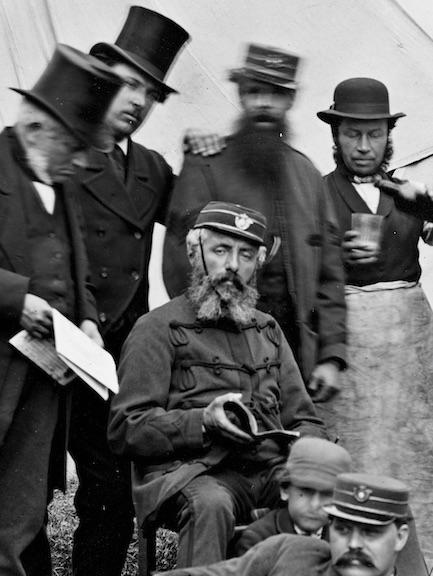
And this is the best info we can get from any of the papers they are holding.
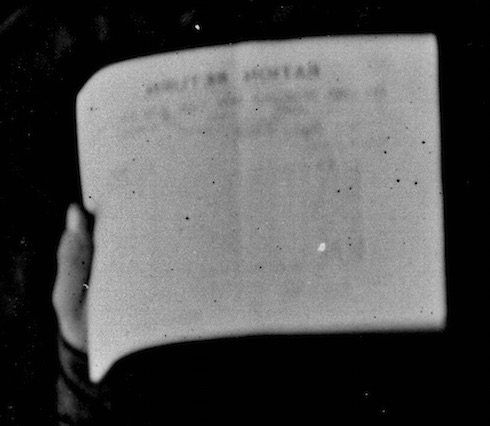
Thanks to Laura in Conservation for her help and advice.
Showing off ones horse!
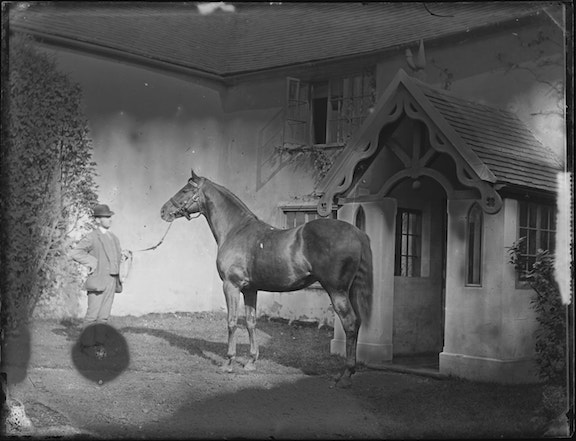
Which came first… maybe they took another because of the snoopers at the lower window in this second plate?
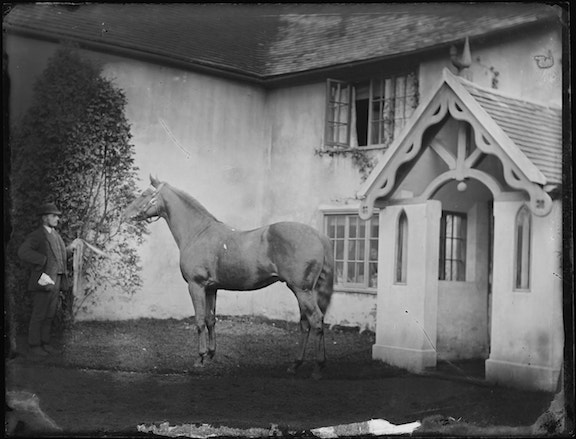
Also the two horse plates have this very yellow hue, maybe from the developer used rather than the varnish?
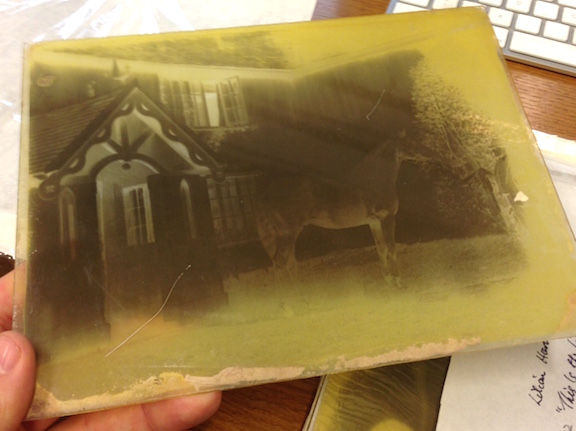
So a great little collection of wet plate negatives, I’m quite pleased with the purchase.

I can’t say how excited I am to see the photos of Spon Street. They’re very, very rare. I’m currently trying to document the oldest images of Coventry buildings I can find, including paintings and drawings and your images are part of the missing jigsaw. As you can imagine the wealthy, pretty parts of the city are well recorded but others, like Spon Street were less appealing, even though many of the early buildings still survived.
I haven’t tied each building in the distance to the map (yet) but I think the white recessed building behind the horse was the last building before Crow Lane. That whole stretch on the south was replaced with factories before the aerial photos captured the area and even some of the artists were too late. Sadly it is now the Ring Road.
Thankyou VERY MUCH.
The large multi story building with the green in front with railings looks like Stoneleigh Terrace which was by Greyfriars Green.
The house with the ivy on the walls and the steps with the fence in front looks like the Stone House at Allesley
In the zoomed photo of Spon Street, the two storey medieval building fourth from the right with the sign is the Watchmaker’s Arms. The Images at the Real Ale Rambles aren’t always the right building but the information seems correct. The map at that site isn’t old enough to capture the last building before Crow lane as it was widened, but you can just see it poking out behind the pub in your photos. As far as I can tell the medieval building directly under the spire is the Mechanics Arms. It will take me a bit longer to work out the last building you can see in the distance.
Hi Helen,
I’m glad you found it so useful. Its partly why I post these things up to my blog apart from my own interest.
Thanks for getting in touch.
Tony
Hi Anne,
Excellent, thank you very much, it looks like you are correct from the limited info online I can find.
Cheers,
Tony
Hi Again,
Wow thank you, so pleased to put a name such a lovely house, and its up for sale at the moment…only £800,000!
Thank you so much for getting in touch.
Tony
Hi Helen,
Between you and AnneW this blog post and the glass negatives are so much richer. Thank you both so much for getting in touch. If better detailed images are useful I can re edit when I get to work tomorrow.
Cheers,
Tony
Thats fine, I enjoy these little problems ! Helen mentioned your site on The Historic Coventry website forum.historiccoventry.co.uk which we both try to contribute to. Thank you for showing the lovely pictures you have. I don’t think I can help with any of the others. A lesson to us all to label our pictures !
Regards Anne
That explains the sudden interest.
Thanks again.
Glad we could help. The picture with the green houses rings a bell but I can’t remember where.
With the soldiers, is it me or is the image flipped? Their coats seem to be buttoned on the wrong side. The guy pouring the drink and holding the pen also seem to be left handed. Not rare but not the most common. Also when the paper is flipped, it looks more like writing Batron Return? Or something like that.
Hi Helen, I’ll check the neg tomorrow, its in the studio, you could be right. I digitise them emulsion side up and might have forgotten to flip this one.
Cheers,
Tony
In the Spon Street picture, the funny little brick structure to the left of the Lamb and Flag is a conduit, which was an early water source. Not exaclty sure how they operated but there seems to be a pipe with a stain on the front wall. An overflow?
Hi Helen, Well spotted, I’ll upload a close up crop.
Cheers,
Tony
Thanks for that. I’ve read about them but this is the first picture of the ones in Coventry I’ve seen.
Hi Tony
I have been looking at the picture of the row of houses with the decorative fence and the dodgy pavement ! I am pretty sure this is a row of houses in Warwick Road. The only picture I can find is in “The Coventry we have lost” by David Fry and Albert Smith, a picture of the Coventry Railwaymens strike 1919. The houses can be seen in the background. The blurb says it is a view looking up Warwick Road from the junction of St Patrick’s Road with Landsdowne Place and the entrance to the Railway goods depot to the right. It could well be Landsdowne Place but you would have to ask someone who knows the area better. If you posted it on Historic Coventry I am sure there would be someone on there that could help.
Hello – Helen, Anne and I are all members of the Historic Coventry Forum.
See the website link above. Would you mind if I shared some of these images on the site please? Loved seeing them (any more?!) Thanks, Neil
Hi Neil,
Of course you may, just reference my blog or link back to it. Glad you enjoy them.
Tony
Thanks so much Tony.
The cleric with the ladies in the Rectory?
garden at Allesley may possibly be The Rev. William Thomas Bree, rector from 1823 to 1863, acquired a reputation as an authority on botany and entomology. If the photo is between those dates.
The plate could fit within the latter part of those dates.
I’ll check him out, thanks.
It’s been a while but I spotted a picture that matches your soldiers – it is labelled – a group of the Second Volunteer Battalion Royal Warwickshire Regiment in camp at Stoneleigh Deer Parkin 1883 by Joseph Wingrave (a likely candidate from the photographer for all the Coventry photographs). The uniforms, the poses and the funny tent structures are the same although there are no civilians in my picture.
Hi Helen,
That’s excellent info. Where did you see the image? Is it online? Or do you own it? I’d love to see a copy. I’ll check out Joseph Wingrave.
Thank you very much
Tony
Hi Tony. It’s in a book called Coventry Past and Passing. It was published in 1927 so the quality is a bit rough. I’m busy scanning a collection of old books so I can add the picture to my to do list and should get round to it in the next two days. Wingrave is the source of many of Coventry’s oldest pictures and he captured a lot of the crumbling streets that were too run down for chocolate box views.
I could put the picture up at the Historic Coventry web site and let you know or email you a copy.
Helen
I would love an email copy, then I could follow up with a blog post on Wingrave. Thank you Helen.
Tony
Hi,
Have these glass plates actually been identified to of been taken by Joseph Wingrave? They certainly look representative of his work and the dates match.
I also have a copy of the Coventry Past And Passing book and along with the other locations I could only presume these are Wingraves.
Hi, I am 99% sure that the ‘Lovely country cottage’ above is Pound Cottage on Coat of Arms Bridge Road in Coventry, this is probably the one referred to by Mr Singlehurst. The cottage has barely changed, it even still has the decorative curve at the top of the door frame. The building is away from the road and not visible on google street view but I have a few photos if you would like to see them.
Regards,
Cliff
Hi Cliff
Yes I’d love to see them
Thank you
Tony
Not sure how to send them Tony, do you have an email address I can use?
Cliff
Hi Sorry, yes I get so much Spam if I put my email on this site.
tony@fourtoes.co.uk
First rate photos, hope to see more.
Hi, very long gap but your picture of the house with the greenhouses has been identified as the rear of Birch Tree Cottage in Keresley. Additional photos of the front:-
https://www.flickr.com/photos/foundin_a_attic/50792023938/in/gallery-boxbrownie3-72157717704252067/
The garage:-
https://www.flickr.com/photos/foundin_a_attic/50791334462/in/gallery-boxbrownie3-72157717704252067/
And the map location:-
https://www.old-maps.co.uk/#/Map/431017/283212/12/100354
I hope that you’re well.
Hi Helen,
Thank you so much for those links, great to see some other angles. This blog post has had a lot of interest, so glad people find it of use.
Tony
re comments left by Prof on July 25, 2018 regarding the identity of the cleric with the ladies in the Rectory. Definitely not W.T.Bree or any of the Bree clerics of Allesley. As a family descendent, I have lots of photos of them and I don’t recognise this chap.
Hello Mike, thank you for getting jn touch and for the updated info.
Cheers
Tony